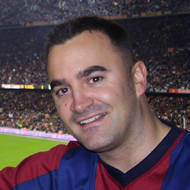Terry has been a Member of the IES since 2004. Having been involved in site investigation works for some years, he went on to achieve a BSc with First Class Honours in Engineering Geology in 2004 at the University of Sunderland. In 2005 he became a Chartered Environmentalist through the IES’ grand-parenting scheme, then in 2011 he qualified as a Chartered Scientist via the same route. Today he is a Director of Arc Environmental Limited, a specialised practice of geotechnical and environmental consultants, who work across the UK, offering a wide range of services to both private and public sector clients.
‘My role within the company involves management of the team, supporting and delegating to staff at a number of levels, maintaining standards of output as well as training, staff motivation and health and safety. All sites are different, in terms of their location, history and ground conditions and I feel that this allows me to enjoy all aspects of my role, whether it be undertaking a simplistic Phase 1: Desk Top Study Report, the design and management of ground investigations, interpretation of the most intricate ground conditions through to the production of remediation strategies, remediation project management and long term monitoring and validation works.’
Arc Environmental Limited was recently commissioned to carry out an extensive geo-environmental investigation over a plateau of land on a former steelworks site. The site was known to be underlain by thick steel slag which was considered to be potentially expansive. Numerous large relic steelwork structures were also present in the ground. Prior to our involvement our client had been advised that development was only possible following the removal of all slag deposits, which was up noted to be 18 m deep in places. The site was also labelled as a potential contamination liability and undevelopable by previous interested parties.
Following completion of a comprehensive Desk Top Study Report, we undertook a programme of intrusive works, which included slag expansion testing and hydration trials. We were able to demonstrate that the slag was of low expansive potential. Following the completion of detailed site modelling and ground contamination risk assessment we were able to prove that all the materials present on site could be left insitu without causing a significant risk of harm to the environment and human health saving the client over £1,000,000 in abnormal costs.



